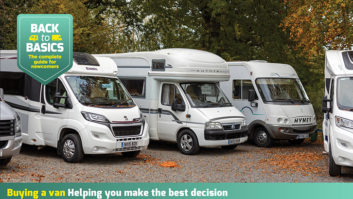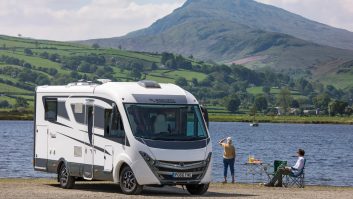You’ve found the dream motorhome – now you need to think about how you’re going to pay for it. No matter how tough it was picking the right motorhome in the first place, it’s every bit as tricky to work out how you’re going to pay for it. Should you sort out a loan, take out finance from the dealer or release some of the equity in your home?
The simplest way is to pay with your own money. That way, you don’t have to involve anyone else in the deal. A dealer will probably prefer you to take out one of their finance deals, but they can’t refuse to take your money. They may well say that it makes more sense for you to keep your savings for a rainy day.
There is some truth in that, but it’s extremely unlikely that the loan you take out will cost less than you earn in interest on your savings. Instead, it’s perhaps best to view this arrangement as paying for the peace of mind of having ready access to a lump sum.
If you want to consider a savings account, you can shop around and find rates of around 3 per cent Annual Equivalent Rate (AER) – or a little higher on some fixed-term deals.
Pension lump sum
You may be planning on using the lump sum from your pension instead. Again, it sounds fine in theory, but an accountant recently warned us that the recession has dealt quite a blow to pensions, and that any lump sum may be smaller than you were expecting.
If you do decide to buy your motorhome using the dealer’s finance, it’s likely to be through Hire Purchase (HP): a series of fixed monthly payments over a set period to complete the purchase.Such schemes have their pros and cons, not least the fact that you don’t actually own the vehicle until the final payment. Until then, it technically belongs to the finance company.
Apr and flat rate
When you’re shopping around, the APR is the key. It’s a standard formula for calculating the cost of a loan, including not only the repayments, but also the various fees. Dealers are obliged to quote you this, so make sure that they do. Don’t be misled by the ‘flat rate’. This is generally lower than the APR, and can therefore make a loan appear cheaper than it actually is.
Borrowing against your home is another possibility. The APRs on mortgages are competitive (some are as low as 2.5 per cent in recent months) so you could extend any mortgage you have. But remember, although you’ll probably add relatively little to your monthly outgoings, if you’re paying that for a long time, the total cost soon adds up.
Equity release
An equity release scheme could also allow you to tap into its value. Such schemes are very complicated, though, so it’s wise to take professional advice. The principle is that you take out a loan based on the value of your home and pay it back at a later date – probably on your death when the property is sold.
Before you can even take out such a scheme, there may well be restrictions – typically on your age. There are also several different types of these schemes to consider.
However you decide to come up with the cash to buy a ’van, it pays to weigh up the pluses and minuses carefully.
Useful websites
- www.moneymadeclear.fsa.gov.uk
- www.consumerdirect.gov.uk
- www.moneysupermarket.com
- www.comparethemarket.com
- www.gocompare.com
- www.unbiased.co.uk
- www.adviceguide.org.uk
- www.moneyexpert.com









